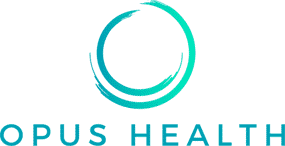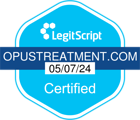Pre-teens and teens who use drugs and alcohol are more likely to see long-lasting impacts. In young people, the human brain is still developing. This makes the impact of drugs and alcohol more significant on the adolescent brain than on adult brains.
The risk of addictive disorders in teens is higher when certain risk factors exist. There are also protective factors that can lower the risk of addiction in teens. If you have a struggling teen, you should look at why it’s important to get them into rehab.
Understanding Teen Drug Abuse
Teenagers who experiment with drugs or alcohol put their safety and physical and mental health in jeopardy. There are a lot of risk factors for drug abuse in teens and significant consequences. The effects of drug use among teens can include:
- Drug dependence: When young people misuse drugs, they’re at a much greater risk of addiction later in life.
- Problems with judgment: Teens who use substances may make poor decisions in their personal and social lives.
- Sexual behaviors: The use of drugs and alcohol is linked to high-risk sexually risky behaviors, practicing unsafe sex, and unplanned pregnancies. Teens who use drugs or alcohol may be more likely to become victims of sexual abuse or rape as well.
- Mental illnesses: The use of drugs or alcohol can raise the risk of developing mental health disorders or complicate existing disorders, according to the National Institute on Drug Abuse.
- Driving impairment: If a teen uses drugs or alcohol and then gets behind the wheel, it can put other people on the roadways at risk, as well as them.
- School problems: Substance use often leads to major declines in school performance and a loss of interest in other activities.
- Legal issues: From drinking and driving to stealing to buying drugs, there is a wide range of harmful legal consequences stemming from teen substance use.
What Drugs Do Teens Most Often Abuse?
Some of the substances teens most often misuse include:
- Marijuana: This drug is fairly popular among teens because it’s easy to get. The perceived risk of the drug has also declined in the past decade, so teens may have a false sense of comfort about using it.
- Cocaine: Cocaine use among teens is less common than marijuana use but still relatively prevalent.
- Prescription drug abuse: Teens may abuse prescription drugs, including opioid painkillers like OxyContin and Vicodin. Many teens who abuse prescription drugs in the United States combine them with other substances like alcohol.
- Stimulants: There are prescription stimulants like Adderall to treat attention-deficit hyperactivity disorder (ADHD). These drugs also have abuse potential. They can give teens a euphoric high and burst of energy, and they also help their academic or athletic performance.
- Heroin: Often, teens who use heroin start out abusing prescription pain medications. Heroin is also an opioid and is cheaper and easier to get than prescription drugs. Heroin is a highly addictive drug even after using it only a few times in many instances.
What Are Risk and Protective Factors?
When we talk about addiction, we hear about risk factors and protective factors.
Many factors can influence whether or not someone will develop a substance use disorder. If any risk factors exist, the goal is to help reduce them while strengthening protective factors.
A risk factor is a characteristic associated with a higher risk of adverse outcomes. Risk factors can be psychological, biological, cultural, family-related, or community-related.
Examples of risk factors include:
- Easy availability of drugs
- Negative peer influences or deviant peers
- A lack of reasonable consequences from family or care providers
- Mental disorders like bipolar or depression
- Family history of addiction or genetic predisposition
- Environmental factors like growing up in an unsafe community
- Lack of attachment with a care provider during a critical period of development
- Being around drug users as a child or young person
- Being the victim of childhood sexual or physical abuse or having post-traumatic stress disorder
- Lack of parental supervision
Protective factors are positive events that can counter risk factors.
The factors that can be protective include a supportive, loving environment with structure and supervision. Access to community and intervention programs can be protective.
With that in mind, the following are five things that can increase the risk of addiction in teens and may be risk factors.
1. Self-Control
Addiction isn’t a lack of self-control because it is a complex disease. However, self-control or a tendency to engage in impulsive behaviors can be a risk factor for a teen to develop an addiction. Parents may see red flags of a lack of self-control early in their child’s life, well before they reach their teen years.
Self-control is part of a group of skills that let both kids and adults manage their emotions, thoughts, and actions. These skills are broadly known as executive function.
Movement control occurs when kids learn not to move inappropriately constantly. Impulse control happens when a child learns to stop and think before saying or doing something. Emotional control helps kids be resilient even when unexpected or upsetting things happen.
A child with problems with self-control might talk nonstop or interrupt when others are speaking. Tantrums and outbursts, and easy frustration are examples of self-control problems that could later put a teen at risk of addiction.
It’s normal for teens to push boundaries and experiment with some risky behaviors during this phase of brain development. They should also be learning how to self-manage and display judgment. A teen who isn’t showing those tendencies could have self-control problems increasing the likelihood of trying illegal drugs or alcohol.
2. Social Groups
Something that can increase the risk of addiction in teens and indicate potential substance use is a sudden change in social groups.
If you notice your teen has stopped hanging out with their old friends and is instead of spending more time with a completely different group of people, it could lead to problematic behaviors.
The people a teen spends their time with play a big role in whether or not they experiment with drugs or alcohol. Peer pressure is very real and impactful for teens.
3. Negative Self-Talk
If you recognize your teen is often hard on themselves or is struggling with low self-esteem, this could contribute to substance abuse. Teens who lack confidence and have low self-esteem are more likely to use substances for a number of reasons.
They might use drugs or alcohol to self-medicate and deal with their feelings. They could also be more prone to peer pressure because they don’t feel confident in themselves.
Self-esteem is critical for how we set boundaries and define our values. When teens develop strong self-esteem, they’re ready to take on challenges. Teens with low self-esteem may feel shame or like they aren’t worthy. That can make a teen less likely to handle their emotions in a healthy, productive way.
4. Relationships
If a teen is socially withdrawn or lacks an attachment to their family or community, they could be more likely to fill potential voids with drugs or alcohol.
If you’re the parent of a teen, focus on creating a solid bond with them to keep them rooted in something positive in their life.
Teens who are also involved and attached to things like sports or extra-curricular activities tend to be less likely to experiment with substances.
You may not realize how much parental monitoring plays a role, but it does. Your teen needs to feel like you are watching what’s happening, creating and following through with boundaries.
5. Academic Performance
School gives teens a sense of purpose and meaning, much like careers when we get older. If your teen isn’t doing well in school, much like changes in their friend group, it can be an effect of substance use, or it can be a red flag that it’s going on.
For example, if you notice a sudden drop in grades, it’s something you should look into more.
Getting Help
If your teen is using addictive substances, the sooner you can get help for them, the more you can reduce the potential adverse effects. Effective interventions are evidence-based and individualized.
Treatment may also include family therapy when possible. We encourage you to reach out to the Opus Health addiction specialists by calling 855-953-1345 to learn more about treatment options geared toward the unique needs of teens.













